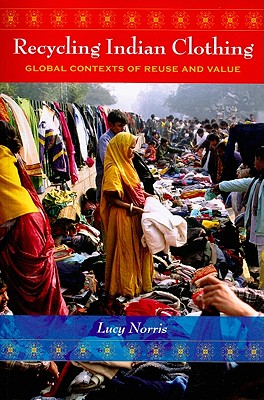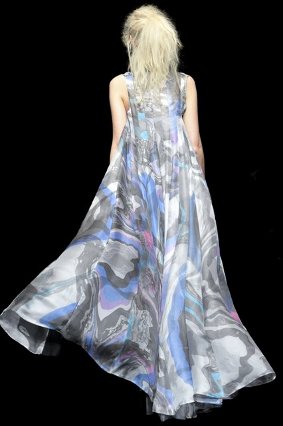Discarded at one time, and hidden away in a drawer of the family home or even flogged off in a car boot sale, 'Little Glass Clementine' turns the most improbable centre piece of unique necklaces, each made 'to measure' for the personality and character of its new owner.
"Made in [your country]" is an ongoing attractive topic in the contemporary sustainable fashion discussion. In many cases, one that borders - or is even right in the middle of - some rather right-wing nationalist sentiments. Europe as a whole does not need that - there is enough quality design and craftsmanship to be proud of without getting into shallow waters.
Algha Works are Britain’s last metal spectacle frame manufacturer, operating from Fish Island - close to the 2012 Olympics' site - for the past century. A portrait.
With Sao Paulo Fashion Week just closed I am here to write (again) about Brazilian fashion.
This time it is about an interesting project I got to know of personally, Projeto Contem, a private and independent initiative.
Projeto Contem is both a brand and a network of entrepreneurs working in textile and fashion as well as in food, beauty, design, arts, music and cinema.
This book emerges itself into how clothing is bought, worn, discarded and recycled within India. In other words, it tracks down how Indian citizens (primarily women) manage their wardrobes, and the strategies and criteria of how they do it.
Understanding cross-border diversity in consumer behaviour, advertising, sales and marketing management is a widely studied topic of international marketing. Cultural difference matter particularly in business negotiations, advertising, consumer behaviour and marketing research. One of the most frequent approaches differentiates between high-context and low-context cultures, which impacts directly on the quality and quantity of information businesses are willing to share.
In Tunisia, like across most of the Maghrib region, textiles, their significance and methods of production remain a firm part of the country’s identity and history. A portrait.
Arabel Lebrusan trained in the art of jewellery in the most prestigious European schools, and has collaborated throughout her career in projects with international companies such as Swarowski. Today, she leverages all her experiences and her knowledge about artisanal techniques, apply them to contemporary designs.
Khadi is an Indian fabric par excellence. Hand-made from start to finish it has for centuries been the livelihood of rural communities. But the industry is in decline. Interview with Shailini Seth-Amin, CEO of MoralFibres, a company set to re-invent Khadi.
The Spitalfields taylors Alexander Boyd is London's last shirt maker. All their shirts are made at the Rayner and Sturges factory in Kent. Impressions from the factory, and the 'making of' a bespoke Savile Row shirt.
5 years ago one Araisara's customers brought in a long Miyazome-dyed handkerchief. The designer fell in love with this beautiful dye technique. As soon as she could, she visited the Miyazome-dye atelier in Utsunomiya City in the northern Kanto region, some 2 hours from Tokyo on the Shinkanzen bullet train. The atelier was run by just one man, who was well into his 80s.
Japanese historic textiles, as much as their modern version, are famouse for their distinct colour ranges. What few know: all 1052 of these shades are created with natural dyes (only!), and each has its own distinct name.
March 22, 2012 : Araisara has completed her last runway show at Japan Fashion Week, and is preparing her collection's launch in Paris in October 2012. But while fashion shows are important, it is the people that remain the one single most important source of inspiration for her brand.
For Araisara, one of the biggest influences in her career as a fashion designer, in her life, comes from a women she tenderly calles 'Granny.' Granny is the inspiration behind Araisara's SS2010 'Hibiki' (echo) collection, which features stunning Sumi-Nagashi dyed fabrics.
The current fashion and textile landscape is fairly limited in terms of what types of materials are being used. Innovation is key, and products such as Tencel, Sorona and Ingeo proof that industry is investing heavily in R&D. Spider Silk may be one of the few natural fibres of the future yet to see it hayday.
Drakes is synonymous around the world with the most beautiful silk ties that money can buy. Founded thirty years ago on a top floor in Old Bond St and operating from a former Royal Mail depot in Old St for the past twenty, Drakes brought manufacturing back to the East End. A portrait.
The first question time discussion in the House of Lords on the topic of sustainable fashion took place on March 3rd, 2011. On March 19th 2013, nearly 2 years later to the day, the 2nd edition took place, again initiated by Baroness Lola Young from Hornsey. The summary
Nigeria’s textile industry used to be – possibly still is – the African continent’s third largest after that of Egypt and South Africa. For one reason or another, the first two are fairly well established among brands of all colours and types as potential – and actual – sourcing destinations. Egyptian cotton is well renowned, as is their industry for jersey goods. Also ‘Made in South Africa’ is not uncommonly found in clothing labels.
Starting in 1866, a shoe factor by the name of William Green came regularly from Northamptonshire up to the City of London to get orders and then take them back to Rushden where, in 1874, he opened his first factory as William Green & Son, founding the company we know today as Grenson.
The factory of James Ince & Sons, the oldest established umbrella makers in the country. Currently owned by the 7th generation, it has not only been around since the invention of the umbrella, but is responsible for the umbrella designs for Marry Poppins as well as Hagrid.



